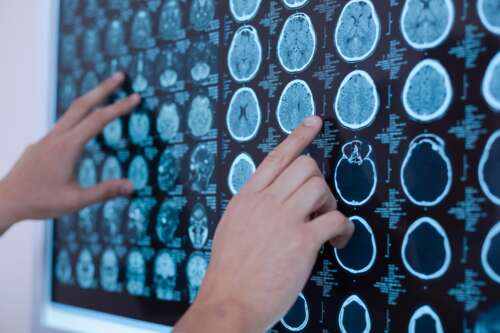
Cancer treatment may become more effective thanks to University of Guelph physicists who have developed an innovative way to accurately target radiation therapy.
Radiation therapy aims beams of intense energy at a tumour to kill cancer cells. But if the ultranarrow beam is aimed inaccurately, it can hit healthy cells and “underdose” the target tumour.
Led by Dr. Dennis Mücher, a professor in the Department of Physics, U of G researchers have come up with a technique called a “hadron tumour marker” to make proton radiation therapy more accurate.
They tested the technique at TRIUMF, Canada’s national laboratory for nuclear and medical physics in Vancouver. The results were published recently in two papers in Physics for Medicine and Biology.
Cancer is the leading cause of death in Canada and half of all cancer patients are treated with radiation therapy. Cancer radiation therapy using ions, including charged particles such as protons, has become more widespread because it can target tumours and cancer cells with great precision. That makes it especially useful for treating cancers in delicate tissues like the eyes, brain or spinal cord.
Measuring the beam’s position outside the patient is easy but it becomes more difficult inside the body. If the beam is slightly off-target, it may accidentally damage healthy tissues and miss part of the target area.
The U of G approach offers precise, real-time treatment beam range verification, said Mücher.

The technique involves implanting a small metallic marker a short distance from the tumour. When radiation hits the marker, it gives off unique gamma rays (a form of electromagnetic radiation). By measuring the gamma rays during treatment, clinicians can assess treatment accuracy in real time.
Using computational algorithms to simulate the process, the researchers found that their technique could accurately measure the beam range inside the patient.
“This method is cost-effective and the real-time feedback that it provides to clinicians will help to treat tumours which currently would be too dangerous to irradiate,” said Mücher.
“In future, we plan to further investigate the biological impact of implanted markers, try out different hadron tumour marker candidates, and improve our experimental setup towards clinical applications with real patients.”
This research was supported by the Canadian Institutes of Health Research, the Natural Sciences and Engineering Research Council of Canada and the Social Sciences and Humanities Research Council. The TRIUMF particle accelerator in Vancouver is funded by the National Research Council.
Contact:
Dr. Dennis Mücher
dmuecher@uoguelph.ca